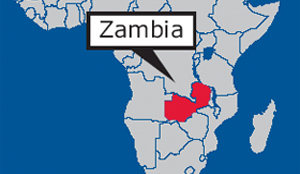 By JAMES KUNDA –
By JAMES KUNDA –
ZAMBIA is ranked among the top 10 most competitive economies in sub-Saharan Arica, the latest edition of the global competitiveness report by the World Economic Forum (WEF) has revealed.
Globally, however, the country has recorded a marginal movement of three places down from last year’s ranking of 93rd to 96th out of 144 countries, scoring 3.86 points.
The WEF founder and executive chairperson, Klaus Schwab attributed the improvement in Zambia’s economy to prudent monetary policies and moderation if food prices, however citing factors such as rising fiscal deficits are among deterrents to growth.
Professor Schwab said Sub-Saharan Africa continues to register impressive growth rates close to five per cent, maintaining the momentum will require the region to move towards more productive activities and address the persistent competitiveness challenges.
He, however, said only three sub-Saharan economies, including Mauritius (39th), South Africa (56th) and Rwanda (62nd) score in the top half of the global rankings,” he said.
Professor Schwab said overall, the biggest challenges facing the region is in addressing human and physical infrastructure issues that continue to hamper capacity and affect its ability to enter higher value added markets.
“As growth is now modestly returning in advanced economies, sub-Saharan economies carry on registering impressive growth rates of close to 5 percent in 2013 with rising projections for the next two years below only emerging and developing Asia,” Professor Schwab said.
“Yet important downside risks remain: although inflation has been coming down from the high rates of the past two years thanks to prudent monetary policy and moderating food prices, rising fiscal deficits are most exacerbate in Zambia, Ghana, and Gambia”.
The Global Competitiveness Report’s competitiveness ranking is based on the Global Competitiveness Index (GCI), which was introduced by the World Economic Forum in 2004.
Defining competitiveness as the set of institutions, policies and factors that determine the level of productivity of a country, GCI scores are calculated by drawing together country-level data covering 12 categories.
These are: institutions, infrastructure, macroeconomic environment, health and primary education, higher education and training, goods market efficiency, labour market efficiency, financial market development, technological readiness, market size, business sophistication, and innovation.






